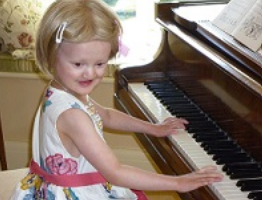Scalp Erosion
This is an extract letter from ED Society member Chrissy Lees-Jones to the Doctor
We receive “The Educator” newsletter, and read your article in it about skin erosion. It is very interesting about your new treatment for transplantation.
Our daughter, Tess, was born with ED (Haywells syndrome) and it’s one of the rarer syndromes as you may probably know. Tess was affected by skin erosion on her head from 10 days old. It became very infected and eroded around the whole of her scalp.
There seems to not be much awareness in Britain about skin erosion, so after visiting 8 hospitals and over 70 dermatologists, all of whom had very opposing ideas as to how to treat Tess’ desperately affected scalp, I made the decision to treat it and bathe it twice a day in salt water morning and night. Over the course of 5 years it healed, and is now strong and able to be open to the sun.
It was a very difficult time in our lives, and Tess had to be brave, but I just wanted to let you know a bit about our story as I am
concerned that many parents are not aware of the healing properties of salt water. It has also meant that the skin has come
back stronger than if I had used steroid creams, and also means that it looks so healthy.
This may be a possibility for other suffers of skin erosion. My husband has the same syndrome, however he didn’t have the skin erosion. He has given tissue samples so the professor at St Thomas’ hospital in London can keep researching into the mutant P63 gene.
I wish you and your team and patients all the best for the future.
Taking AEC and EEC Research to the Next Level
By Maranke Koster, Ph.D.
Reproduced with the kind permission of the NFED
Overview of Our Research
AEC and EEC are ectodermal dysplasias, caused by mutations in the p63 gene. Although only AEC has historically been linked to the presence of skin erosions, data from the NFED’s Ectodermal Dysplasias International Registry indicate that over 25% of EEC patients exhibited skin erosions at some point during their lives.
Our overall goal is to develop a strategy for the treatment of skin erosions in AEC and EEC patients, by generating healthy replacement skin that will not be immunologically rejected by the patients.
To accomplish this goal, we are developing a strategy that utilizes the patients’ own skin cells.
(Editor’s Note: AEC is ankyloblepharon-ectodermal dysplasia-clefting syndrome, which was formerly known as Hay Wells
syndrome or Rapp Hodgkin syndrome. EEC stands for ectrodactyly-ectodermal dysplasia-clefting syndrome.)


